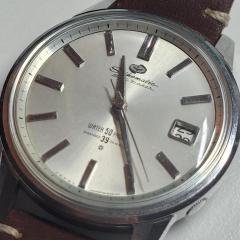Help determining part name?
-
Recently Browsing
- No registered users viewing this page.
-
Topics
-
Posts
-
Yes! The terminal curve shape is key. I struggle not only with shape but also the angle it leaves the stud and the the height it leaves the stud. Since on the NH movements the spring is attached to the stud by friction fit and set by machine it can be off and hard to get right. I find moving the stud angle really affects the coil spacing. I understand how to shape a terminal curve but when you install the spring and cock into the movement if gte spring is tilted up or down how do I get the spring flat? The sling on the left is after shaping and I thought was good but it is way off and required more work. The one on the right is new.
-
Welcome to the forum. We need to see photos but you're best searching eBay for prices.
-
Yes you should just be able to unscrew it. What's the movement number and what part did you buy from Cousins?
-
Well I've never seen a Citizen movement like that before. Can you confirm the size of the movement.
-
Hi all, I'm currently working on my second Omega Seamaster Cosmic 2000. While the movement is now 'under control', I have a new issue that I have not yet run in to so far. The stem of the Omega is a split stem, with male and female part. The female stem part (attached to the crown side) is broken. So I need to replace it, while of course keeping the original crown. When searching on google/Youtube I see a lot of examples where the threaded stem can be removed with the aid of a pin vice, just unscrew. But this stem looks different, see attached photo's. No thread and I can't tell if it's one part or multiple parts. I already have an Omega replacement female stem from Cousins, but that one is threaded and much thinner in diameter. Does anyone have experience with this? Can I just unscrew the stem from the crown, or does it work differently? Hope somebody can help!
-




Recommended Posts